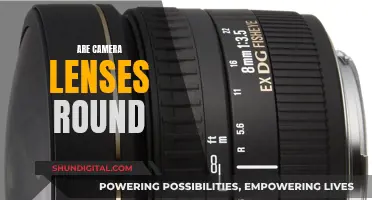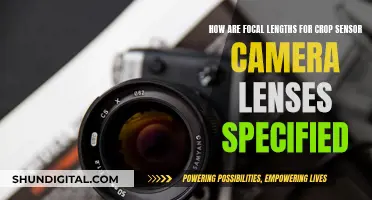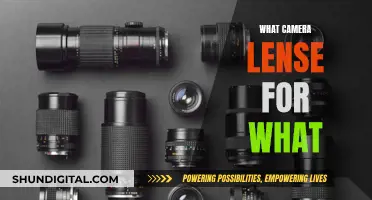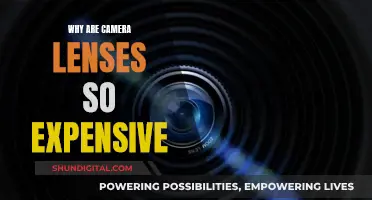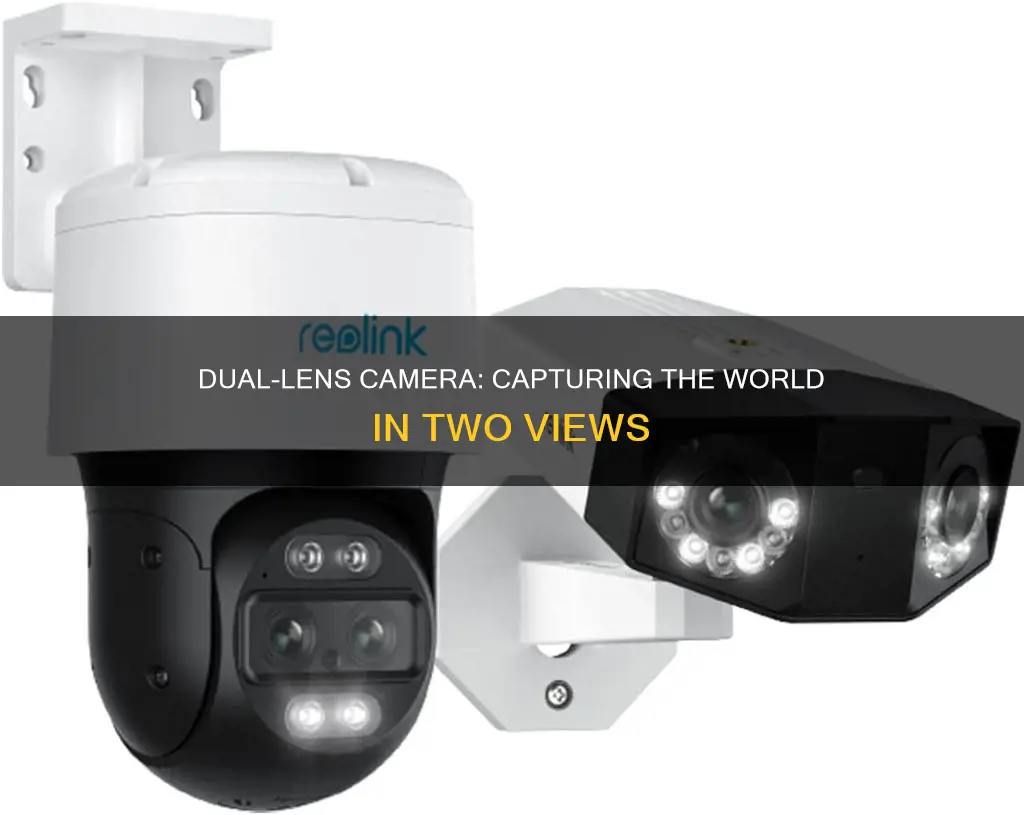
The dual-lens camera is a feature of modern smartphones that has emerged in response to the demand for high-quality photography capabilities in a thin device. By employing multiple lenses, manufacturers have been able to enhance image detail, improve low-light performance, enable optical zoom, and facilitate various creative modes such as portrait mode and augmented reality applications. The dual-lens system offers improved zoom capabilities, better image quality, and enhanced depth estimation for a more immersive visual experience. This technology first appeared in the HTC Evo 3D smartphone in 2011 and has since evolved and improved, becoming a standard feature in premium smartphones.
| Characteristics | Values |
|---|---|
| Number of photo sensors | Two instead of the standard one |
| Main camera | Takes high-quality coloured images |
| Second camera | Adds more elements, boosts clarity, captures wide-angle photos, captures depth of field |
| Zoom | Optical zoom adjusts the camera lens itself, providing a hardware solution |
| 3D photography | Creates three-dimensional photographs by combining images from the left and right lenses |
| Wide-angle lens | Captures a wider-than-usual photo, like a landscape shot |
| Monochrome sensor | Takes higher-quality black and white photos, permits more light and improved contrast |
| Telephoto lens | Allows for better zoom quality, gives photos depth of field |
What You'll Learn

Dual lenses improve zoom and low-light photography
The dual-lens camera system has revolutionised smartphone photography, bringing a host of improvements, including enhanced zoom and better low-light performance.
Enhanced Zoom
The addition of a second camera lens to smartphones has brought a range of benefits, with one of the most significant being improved zoom capabilities. Before the introduction of dual-lens technology, zooming on a smartphone was almost always digital, which resulted in a loss of quality as the image was cropped and resized. The dual-lens system, however, allows for optical zoom, which provides a much higher-quality close-up image. This is achieved through the use of a dedicated telephoto lens, which offers a longer focal length, bringing the subject closer without sacrificing image quality.
The optical zoom offered by dual-lens cameras also helps to reduce the grainy, pixelated effect often seen in digital zoom images. By utilising the wider field of view, the lens can capture more detail, resulting in clearer and crisper photos, even when zoomed in. This is particularly useful for capturing distant subjects or fine details without losing image quality.
Improved Low-Light Photography
Another advantage of dual-lens cameras is their improved performance in low-light conditions. The wide-angle lens, commonly found in dual-lens setups, typically has a larger aperture, allowing more light to reach the camera sensor. This results in better-exposed images with reduced noise and graininess, which are common issues in low-light photography. The increased light intake also helps to improve video quality, making it smoother and less grainy.
The second lens in a dual-lens setup can also be a monochrome sensor, which captures only light and shadow information. This additional light data can then be combined with the colour information from the main RGB camera, resulting in a more detailed and better-exposed final image, even in low-light conditions. This technology enhances the camera's ability to capture intricate details and produce clearer images, even in challenging lighting environments.
Tomorrow's Eclipse: Camera Lenses at Risk?
You may want to see also

They can create 3D images
Dual-lens cameras can be used to create 3D images. The two lenses capture the same scene from two different perspectives, mirroring how human eyes interpret data through complex computational processing. This is known as stereo-vision analysis. By juxtaposing images from two distinct angles, depth information can be extracted through stereopsis by assessing how objects shift positions between the captured frames.
The HTC Evo 3D and LG Optimus 3D smartphones, released in 2011, were among the first to utilise dual-lens technology to create 3D images. These phones used dual lenses to capture 3D video and photos, creating a sense of depth in the images. This was enhanced by a 3D display that allowed users to view the images without glasses. While 3D technology proved to be a passing trend, it demonstrated the potential of dual-lens cameras in creating immersive visual experiences.
Dual-lens cameras can also be used for security and surveillance purposes, providing a wider field of view and improved depth perception compared to single-lens cameras. This makes them ideal for monitoring large areas and capturing fine details that may be crucial for identification or evidence. Additionally, dual-lens cameras offer advanced features such as auto-tracking and auto-zoom, making them a valuable tool for home security and fleet management.
In photography, dual-lens cameras provide photographers with more options for composing their shots. The second lens allows for simultaneous focus on distant and close objects, creating greater depth in each composition. It also enables photographers to adjust lenses quickly without physically switching them out. This flexibility results in sharper images and gives photographers the ability to create unique visual effects, such as the ""bokeh" effect, where the background behind the subject is blurred for a stunning visual impact.
Overall, dual-lens cameras offer enhanced functionality and creativity compared to single-lens cameras, making them a valuable tool in various industries, including photography, security, and fleet management. The ability to capture 3D images is just one example of how dual-lens technology is revolutionising the way we see and interact with the world around us.
Drying Camera Lenses: Quick and Easy Steps for Photographers
You may want to see also

They can improve image detail and clarity
Dual-lens cameras can improve image detail and clarity in several ways. Firstly, by utilising a second lens, the camera can capture more light information, resulting in brighter and less noisy images, especially in low-light conditions. This is achieved through the wider aperture of the wide-angle lens, which allows more light to reach the camera sensor. This feature is particularly useful for capturing landscapes or sightseeing, as it ensures better exposure and reduces graininess.
Additionally, dual-lens cameras can enhance image detail by utilising one lens for colour information and the other for light information. For example, the Huawei Mate 10 Pro and P20 Pro use a second monochrome sensor to capture a high-resolution black and white image, which is then combined with the colour image from the main RGB camera, resulting in a more detailed and vibrant final image. This method also improves the dynamic range of the image, allowing for better low-light and high-contrast scene captures.
The use of two lenses also enables depth estimation, where the phone can estimate the distance to objects in the scene by measuring the parallax between the two images. This feature is essential for achieving a bokeh effect, where the background is pleasingly blurred while the subject remains sharp. It also enables "portrait mode", where the subject is in focus and stands out from the blurred background, adding depth-of-field to the image.
Furthermore, dual-lens cameras offer improved zoom capabilities. The second lens often acts as a telephoto lens, providing optical zoom without the need for digital cropping, resulting in higher-quality close-up images. This feature is particularly useful for capturing detailed shots of distant subjects without losing image quality.
Overall, the combination of these factors allows dual-lens cameras to capture images with improved detail, clarity, and dynamic range, resulting in a significant enhancement in image quality compared to single-lens cameras.
Squaretrade Coverage for Camera Lenses: What You Need to Know
You may want to see also

They can be used for augmented reality applications
Dual-lens cameras are an integral part of advanced features like augmented reality (AR). The dual lenses capture depth information, which is crucial for AR applications. AR combines the real world with computer-generated 3D content, creating an immersive, interactive experience.
Dual-lens cameras enable devices to understand the spatial layout of the environment, allowing virtual objects to be overlaid onto the real world with remarkable accuracy. This depth information is essential for AR to function effectively. With dual lenses, devices can create a depth map of the environment, including the distance to objects and their positions. This capability has numerous applications in AR.
One example is in creating applications for visually impaired individuals, where audio feedback can guide them to avoid obstacles by detecting nearby objects. Another use case is in room mapping, where precise measurements and dimensions of a space can be captured to aid in furniture shopping or interior design.
Additionally, dual-lens cameras can enable gesture recognition, bringing us closer to an AR world like Microsoft's HoloLens. This technology allows for interactivity with virtual objects through finger-tapping gestures.
The combination of dual-lens cameras and AR has the potential to revolutionize how we interact with technology, creating a more immersive and intuitive experience.
Kit Lenses: The Basics of Camera Starter Kits
You may want to see also

Dual lenses can enable optical image stabilisation
The dual-lens camera system has become increasingly popular in recent years, with many smartphone manufacturers adopting this technology. One notable advantage of dual-lens cameras is their ability to enable optical image stabilisation, enhancing image quality and stability.
Optical image stabilisation is a crucial feature, especially when capturing photos or videos in challenging conditions, such as low light or while in motion. This feature ensures that images remain sharp and clear, even when there is insufficient lighting or when the camera is subjected to slight movements or vibrations.
The Samsung Galaxy Note 8 is a pioneering example of a dual-lens camera system with optical image stabilisation. Both lenses in the Note 8 are equipped with this stabilisation technology, allowing for superior performance in less-than-ideal conditions. This feature is particularly useful for capturing fast-moving subjects, such as toddlers, or taking portraits in dimly lit environments.
The implementation of optical image stabilisation in dual-lens cameras involves the use of multiple lenses that work in tandem to stabilise the image. One lens may be dedicated to capturing the depth of field or depth information, while the other lens takes high-quality coloured images. By combining the data from both lenses, the camera can produce sharper and more stable images.
Additionally, optical image stabilisation can also be achieved through innovative lens designs, such as folded optics. This technique involves placing the camera sensor vertically within the phone and utilising a mirror or prism to reflect light into the lens. This approach helps overcome the thickness limitations of smartphones, allowing for improved stabilisation and image quality.
In conclusion, dual-lens cameras with optical image stabilisation offer significant advantages in photography and videography. This technology empowers users to capture crisp and clear images, even in challenging lighting or movement conditions. As smartphone camera technology continues to evolve, we can expect even more advanced stabilisation features and improved image quality in the future.
Lens Compatibility: How to Identify Camera Lens Brands
You may want to see also
Frequently asked questions
A dual-lens camera offers two photo sensors instead of the standard one. The main camera captures high-quality coloured images, while the second camera adds more elements like zoom, clarity, and wide-angle capabilities.
Dual-lens cameras offer a range of benefits, including improved zoom, better low-light photography, enhanced image detail, and the ability to capture wide-angle photos. They can also enable special features like portrait mode and augmented reality applications.
There are several types of dual-lens cameras, including depth sensor cameras, wide-angle lens cameras, monochrome sensor cameras, and telephoto lens cameras. Each type offers unique advantages, such as improved zoom, better low-light performance, or enhanced image detail.
Dual-lens cameras, particularly those with a telephoto lens, can provide optical zoom, which physically adjusts the camera lens to magnify the image without reducing image quality. This results in clearer and crisper photos compared to digital zoom, which simply crops and enlarges the image.
Popular smartphones with dual-lens cameras include the Apple iPhone 8 Plus, Samsung Galaxy Note 8, Huawei P9 and P10, LG G5 and G6, and the Motorola Moto G5s Plus.




